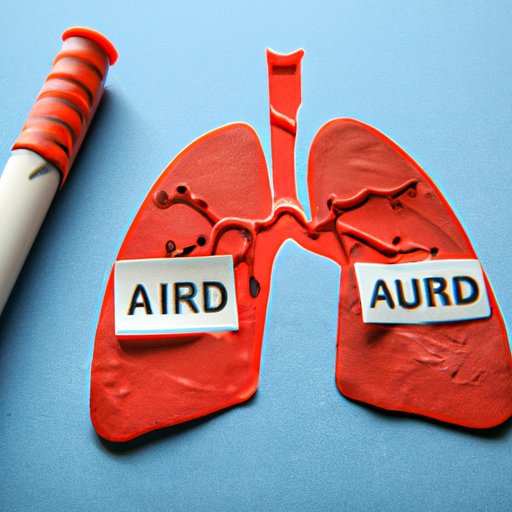I. Introduction
Chronic Obstructive Pulmonary Disease (COPD) is a serious respiratory disease that affects millions of people worldwide. COPD can reduce your ability to breathe, making it difficult to perform daily activities like walking, getting dressed and even sleeping. The purpose of this article is to provide you with a comprehensive overview of the various causes of COPD and strategies to prevent and manage the disease, thus improving your quality of life.
II. Smoking and COPD
Cigarette smoke is one of the leading causes of COPD. Smoking contains harmful chemicals that can damage lung tissue, leading to inflammation and other respiratory issues. In fact, statistics suggest that 90% of COPD cases are related to smoking. If you smoke, it’s never too late to quit. Even if you’ve tried to quit before, you can continue to try until you quit for good. Reducing your exposure to tobacco smoke is important in managing COPD and preventing further damage from smoking.
III. Environmental factors and COPD
Long-term exposure to air pollution like car exhaust, fumes, and industrial toxins can also lead to COPD. For example, people who work in welding or construction industries may be more at risk. It’s important to identify these harmful pollutants and reduce exposure to them. Additionally, improving indoor air quality by using air filters at home can significantly reduce symptoms of COPD and other respiratory diseases.
IV. Genetics and COPD
While smoking and environmental factors are the primary causes of COPD, a family history of respiratory issues can also play a role. Recent studies have uncovered how specific genes can increase or decrease an individual’s risk of developing COPD. Suitable genetic counselling and testing may help diagnose and aid in the management of the disease. Talk to your doctor about your family history and potential risks for developing COPD, if any.
V. Respiratory infections and COPD
Respiratory infections like pneumonia and influenza increase the risk of developing COPD. Individuals with COPD should work with their doctor to get vaccinations to protect themselves against these respiratory infections. Individuals must also take precautions to avoid the spread of illness by washing their hands frequently and avoiding people who have an active respiratory infection.
VI. Lifestyle factors and COPD
Poor nutrition, a sedentary lifestyle, and chronic stress can further complicate COPD symptoms. A balanced diet, regular exercise, and stress-management techniques can help maintain good respiratory health and prevent COPD complications. Proper nutrition is imperative since being overweight or underweight may be due to COPD complications. Those with severe COPD may find it difficult to exercise, but incorporating light exercises like walking or yoga are helpful.
VII. Age-related changes and COPD
Lung function decreases naturally with age, increasing the risk of COPD. However, you can reduce your risk of developing COPD by maintaining good respiratory health throughout life. These measures are simpler steps one can take in maintaining better respiratory health even at a late stage in life. Visit your doctor for regular checkups and lung function tests.
VIII. Diagnosing and treating COPD
COPD is often diagnosed based on a physical exam, breathing tests, chest x-rays. It’s essential to seek medical attention if symptoms like chronic coughing, wheezing, or breathlessness arise. Treatment plans for COPD involve managing symptoms, preventing complications, and treating underlying causes. Common treatment options include medications, oxygen therapy, and pulmonary rehabilitation. It is crucial to work with healthcare providers in managing the disease effectively.
IX. Conclusion
COPD is a serious respiratory disease, but there are strategies for preventing or managing it effectively. Quitting smoking, avoiding environmental pollutants, eating a nutritious diet, regular exercise, managing stress, and getting vaccinated can reduce the risk of developing COPD. If you suspect you have COPD, see a healthcare provider for an accurate diagnosis, and work with them to develop an individualized treatment plan that meets your needs.
